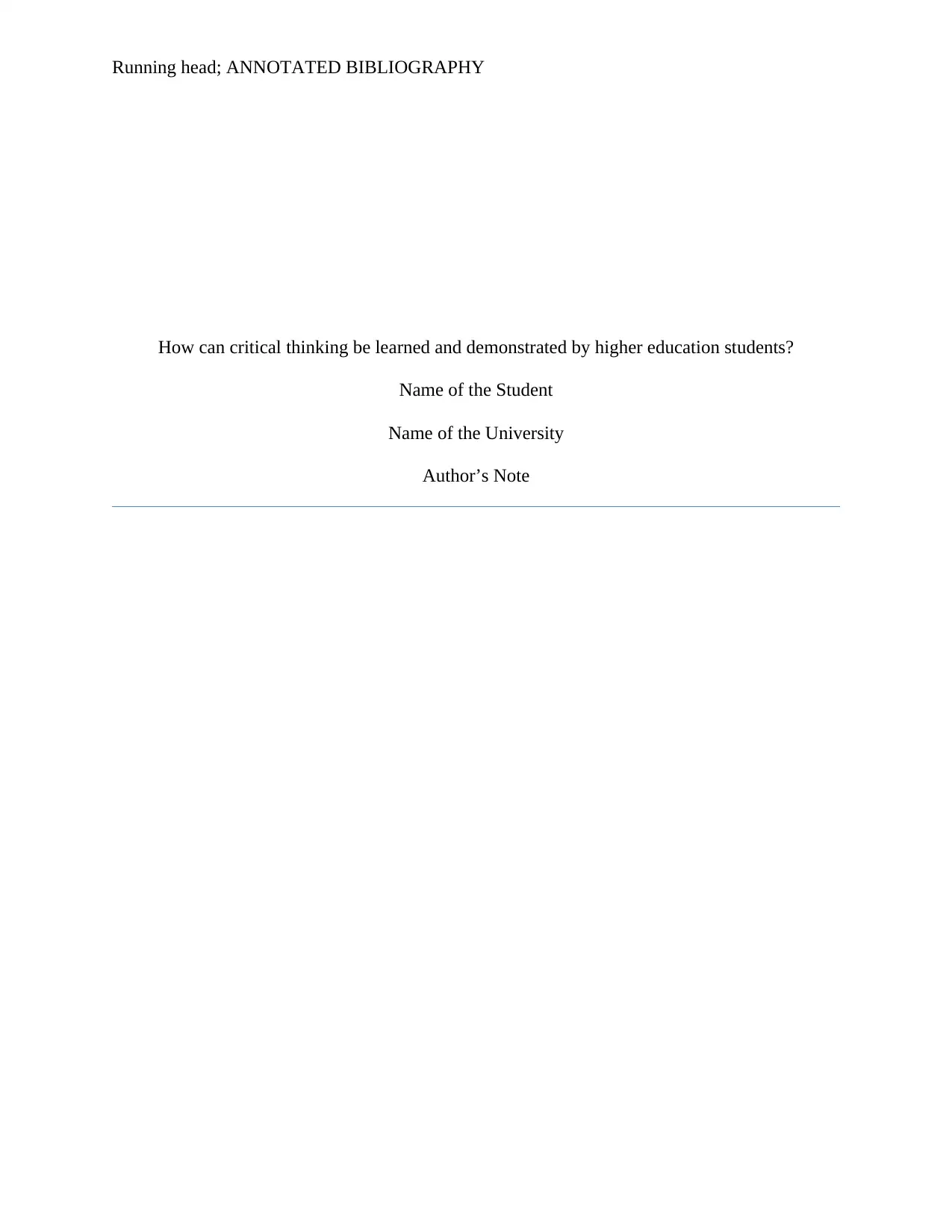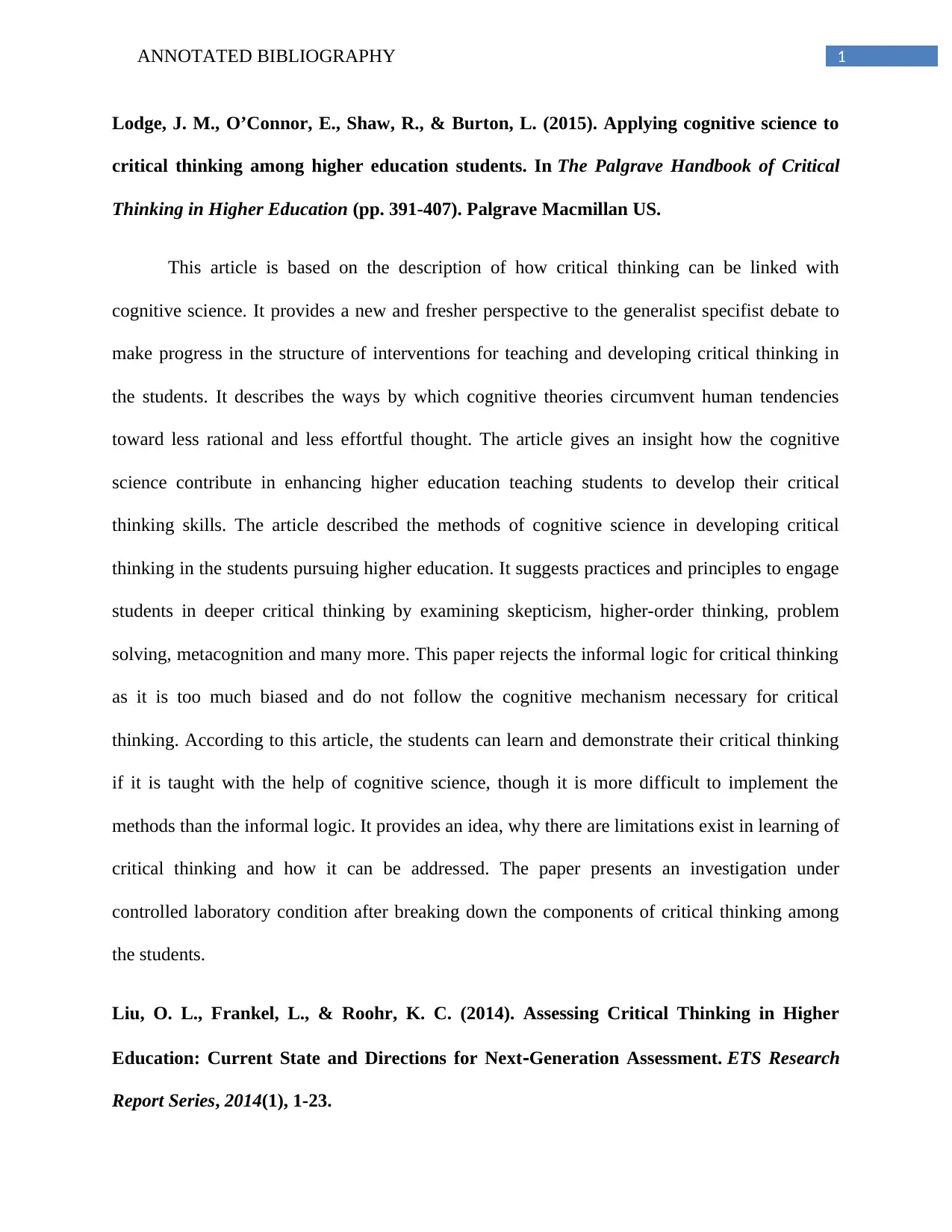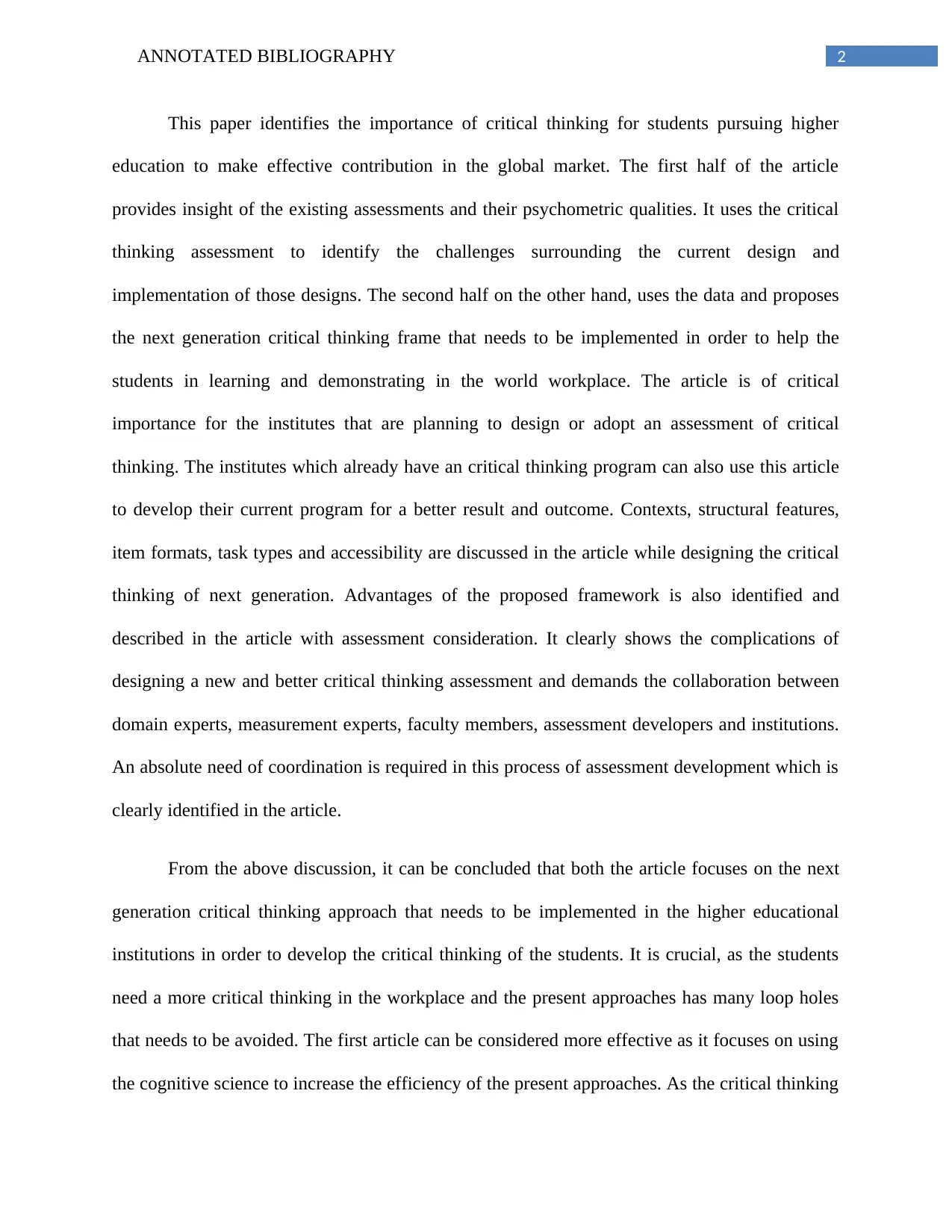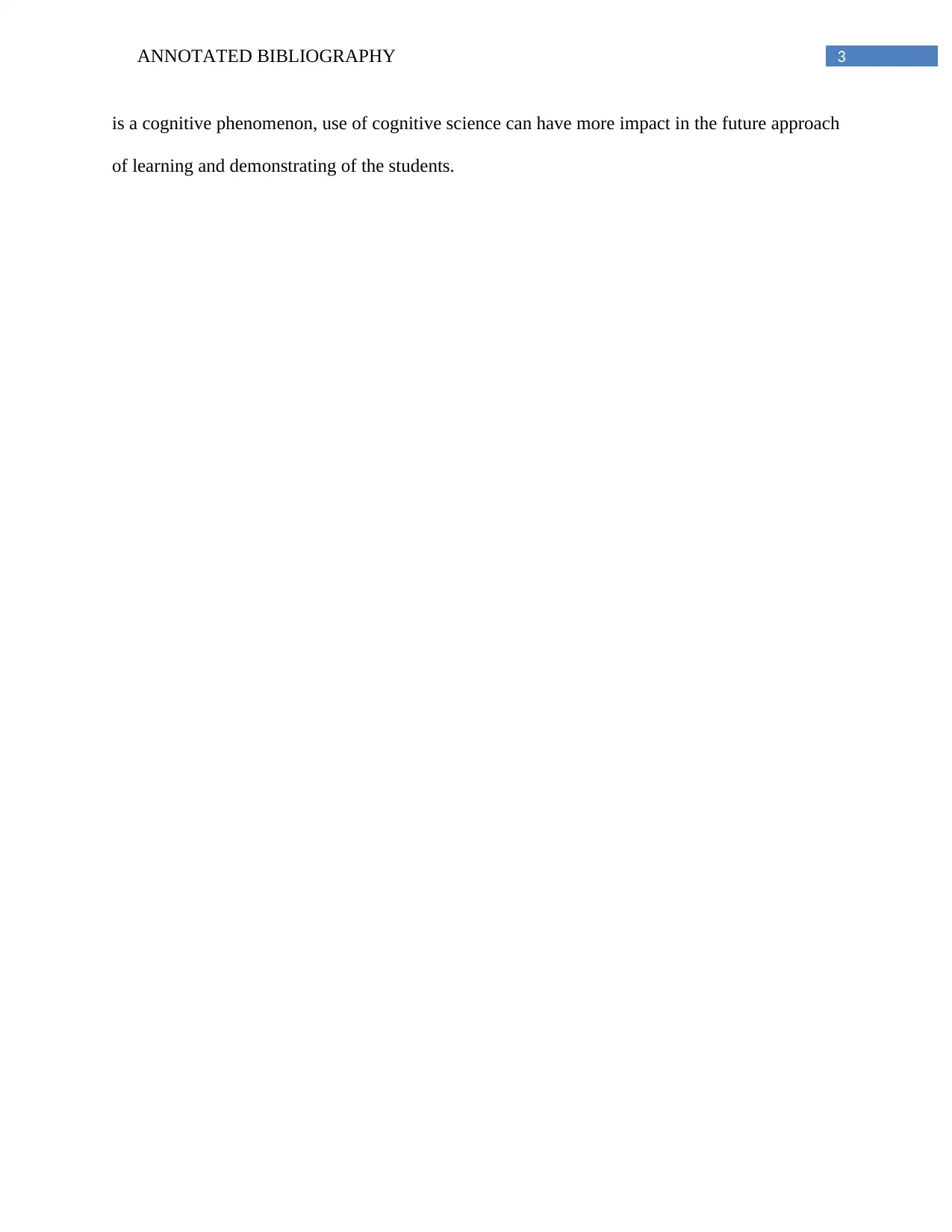Higher Education: Annotated Bibliography on Critical Thinking
VerifiedAdded on 2020/03/04
|4
|745
|97
Annotated Bibliography
AI Summary
This annotated bibliography examines two key articles related to critical thinking in higher education. The first article, "Applying cognitive science to critical thinking among higher education students," explores how cognitive science can be applied to enhance critical thinking skills, suggesting that it offers a more effective approach compared to informal logic. The second article, "Assessing Critical Thinking in Higher Education: Current State and Directions for Next‐Generation Assessment," focuses on the importance of critical thinking for students in the global market and proposes a next-generation framework for assessing critical thinking, highlighting the need for collaboration among various experts to improve current assessment methods. Both articles emphasize the need for improved strategies in higher education to foster and evaluate critical thinking abilities, with the first article advocating for a cognitive science approach and the second focusing on assessment design. The bibliography underscores the significance of critical thinking in preparing students for the workplace and highlights the limitations of existing methods, advocating for innovative approaches to enhance student learning and demonstration of critical thinking skills.
1 out of 4











![[object Object]](/_next/static/media/star-bottom.7253800d.svg)